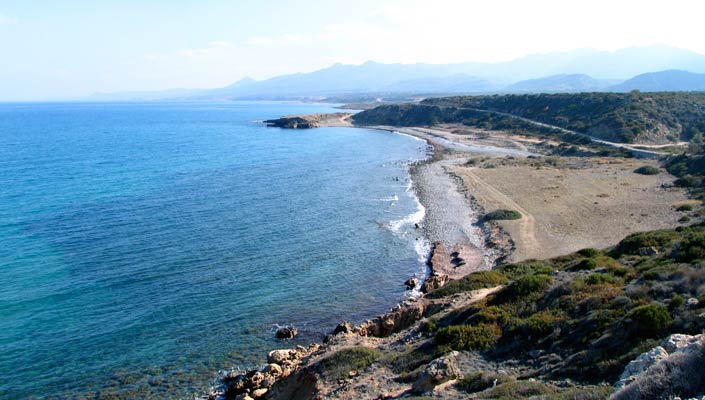The guidebooks gave me a very wrong impression of Famagusta. They make out like it is a ghost town with huge Venetian walls encircling a few crumbling buildings with everything overgrown and left to nature. The walls are there for sure as are the ruins but there are also plenty of people living there as well, in newish houses and with the usual infrastructure. In fact the central area around the cathedral has undergone a degree of rehabilitation and pedestrianisation with a few pleasant cafes and all round it had a very pleasant feel to it - despite the dark clouds which swirled around threatening to dump on us at any moment.
Like the other main cities of Cyprus (Nicosia and Kyrenia), the Venetians put up the huge thick walls around Famagusta but like the other cities they weren't enough to withstand the onslaught of the Ottomans in the late 16th Century. Having said that Famagusta did hold out for 10 months but after the surrender it suffered more terrible damage and was then pretty much abandoned for hundreds of years. In fact many of the 100,000 cannonballs the Ottomans used are still to be seen arond the town, adorning gardens and walls.
Dominating the city is the Lala Mustapha Pasa Camii (St. Nicholas Cathedral). Completed in the early 14th Century and resembling the cathedral at Rheims it still looks magnificent despite losing its twin towers. It now has a minaret of course but this does not detract from its beauty like its sister in Nicosia.

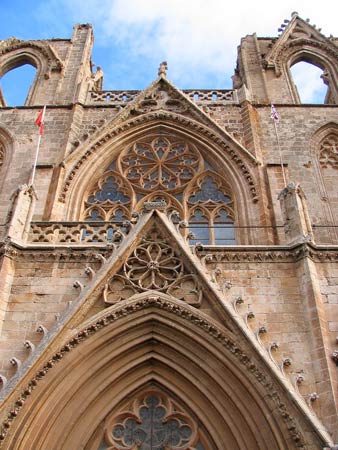

There are plenty of other churches which did not fare as well such as the half demolished St George of the Greeks.

Nearby is the exquisite Byzantine chapel of Ayia Zoni which has been sensitively restored despite its position in an area of waste ground.

The Lion of St Mark is above the entrance to the citadel, a Lusignon fort which is more popularly known today as Othello's gate as Famagusta is the 'port in Cyprus' in Shakespeare's play.

Part of the city walls which still encircle the old city.

British postbox from King George's day still in use.
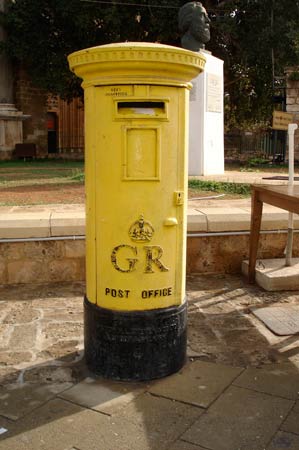
Near the cathedral are a few very pleasant cafes including Petek Pastanesi where we got a turkish coffee and this delicious custard pastry topped with pistachios.

We left Famagusta taking the coast road north, past a string of beaches. This one is just by the ancient Roman ruins of Salamis.


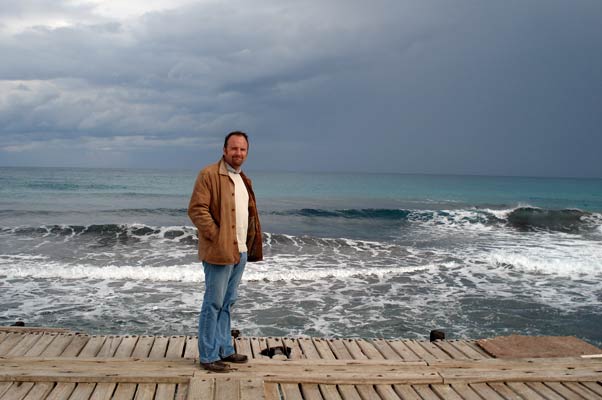

Not far from Famagusta in the village of Iskele is the Byzantine Church of Panayia Theotokos. I don't think it is used as a church any more but rather as an 'icon museum'. The icons aren't up to much but the frescoes on the ceiling rival the best of those seen in the more famous churches in the south of the island.

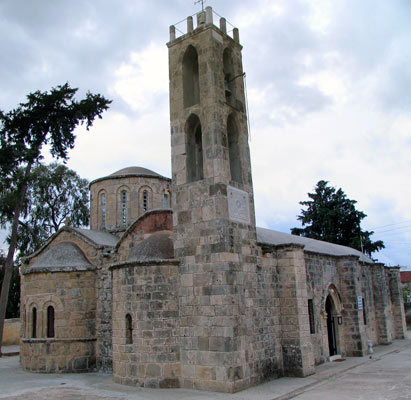

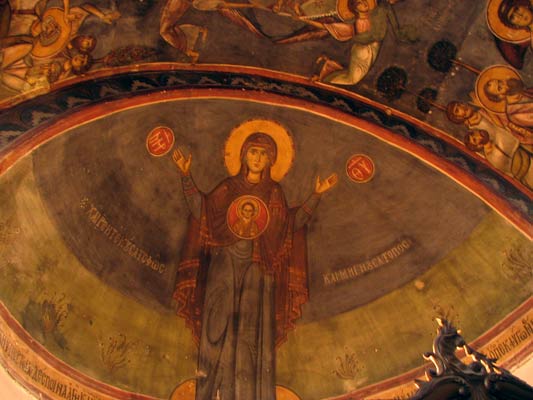
On another day we went further East onto the panhandle of Cyprus, more accurately known as the Karpas peninsula. It is famous for its wild beaches where thousands of turtles come to lay eggs in the late summer months. Unfortunately even this formerly wild part of Cyprus is being encroached upon by tourist and 'retirement' developments with often ridicuous names like 'Malibu village'.
